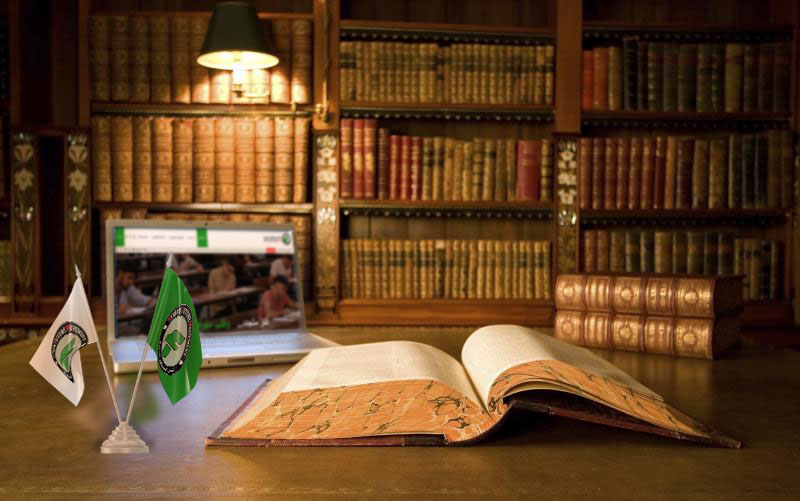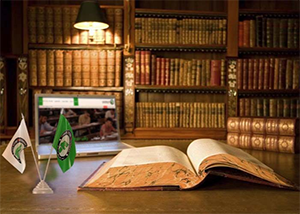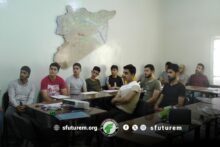Democracy and Syrian Reservations

Introduction:
Democracy is one of the most controversial and compelling political concepts of the modern era, embodying people’s aspirations for self-governance and equality. However, its multifaceted nature necessitates an in-depth academic analysis of its definition, forms, and historical development. This was affirmed by President Ahmed Al-Shar’a in The Economist when asked about democracy, as he responded by highlighting the multiple definitions it holds among Syrians.
Definition and Essence:
The roots of the term democracy trace back to the Greek words demos (people) and kratos (power), signifying rule by the people. However, the modern definition is more complex. In his book On Democracy, Robert Dahl explains that democracy is not limited to elections but also includes guarantees such as effective participation and political equality. He presents the polyarchy model, which emphasizes electoral competitiveness and freedoms of expression.
Democracy is divided into two main forms:
- Direct Democracy: Citizens participate directly in decision-making, as seen in ancient Athens.
- Representative Democracy: The people elect representatives to govern on their behalf, which is the dominant model today.
Arend Lijphart, in Patterns of Democracy, defines two models:
- Consociational Democracy: Based on power-sharing among minorities.
- Majoritarian Democracy: Focused on majority rule.
Democracy is based on principles such as the rule of law, separation of powers, and the protection of minority rights.
Process:
Historical Development and Modern Phases:
A. Historical Development:
Democracy began in Athens (5th century BC) but excluded women and slaves.
In the modern era, representative models emerged with the American and French revolutions. Samuel Huntington, in The Third Wave, identifies three phases of democratic transition:
- First wave (1828–1926): Expansion of democracy in Europe and America.
- Second wave (1943–1962): Post-World War II democratization.
- Third wave (1974–1990): Spread across Latin America and Eastern Europe.
B. Democratic Transition:
Guillermo O’Donnell and Philippe Schmitter, in Transitions from Authoritarian Rule, argue that democratization requires negotiations between old and new elites, with civil society playing a key role. This marks a fundamental distinction between modern democracy and its predecessors.
Contemporary Challenges:
Erosion and New Authoritarianism:
Democracy today faces challenges such as Democratic Backsliding and populism, which exploit political polarization. Larry Diamond warns of institutional erosion due to corruption and weak political culture. Likewise, Francis Fukuyama notes that the complexities of the modern state may hinder democratic responsiveness.
Despite these challenges, democracy remains the most capable system for balancing freedom and equality. Its future depends on strengthening institutions and fostering a culture of participation, requiring collective efforts from both elites and citizens.
Syrian Reservations on Democracy: Analyzing Non-Democratic Forces and Their Positions:
Since the Ba’ath Party’s seizure of power in 1963, Syria has represented a model for authoritarian regimes in the Middle East, despite both international and domestic calls for democratic reform. The Syrian regime has consistently shown profound reservations towards democratic transformation, supported by both internal and external alliances.
The Ba’athist system became further solidified with Hafez al-Assad’s rise to power in 1970, transforming the country into a one-party state. Historian Hanna Batatu points out that the Ba’ath used the ideology of “Unity, Freedom, and Socialism” to justify its dominance, excluding any opposition through security apparatuses. Furthermore, Patrick Seale explains that Assad Sr. built a system based on familial and sectarian loyalties, enhancing authoritarian stability at the expense of pluralism.
The Ideological Framework of the Ba’ath Party:
Despite the Ba’ath Party’s slogans about “popular democracy,” its ideology became a cover for absolute power. Raymond Hinnebusch argues that the Ba’ath developed a “formal democracy” through controlled elections while monopolizing real decision-making.
Moreover, the writings of Michel Aflaq, the party’s ideological founder, emphasize the primacy of “Arab unity” over party pluralism, justifying the suppression of opposition.
The Army and Security Apparatus: Pillars of the Assad Regime:
The army and security forces formed the backbone of the defunct Syrian regime, as the state was governed through a complex network of intelligence agencies (Mukhabarat). Lisa Wedeen notes that Assad’s regime relied on a “politics of intimidation” by showcasing power, which eroded citizens’ trust in any democratic alternative.
According to Nikolaos Van Dam, the security apparatus was predominantly controlled by Alawites, reinforcing fears that democracy could disrupt the sectarian balance.
Economic Elites and Rentier Capitalism:
As Syria transitioned to a limited market economy under Bashar al-Assad, a class of businessmen closely tied to the regime emerged. Bassam Haddad explains that “rentier capitalism” created shared interests between economic elites and the regime, leading them to resist reforms out of fear of losing their privileges.
Volker Perthes notes that privatization in the first decade of the 21st century exacerbated corruption, turning democracy into a threat to financial interests.
The Sectarian Factor and Alawite Identity:
The former Syrian regime is considered a model of sectarian authoritarianism, with Alawites holding all key positions. Burhan Ghalioun warns that democracy in a multi-sectarian society could lead to Sunni majority rule, posing a threat to minorities.
However, according to Rodney Stark, the Assad regime used sectarianism as a tool to divide society and weaken democratic demands.
The Victorious Syrian Opposition: Contradictions of Democracy:
Although some opposition factions, such as the National Coalition, adopted democratic rhetoric, others—such as Islamist groups—rejected the liberal model. Yassin al-Haj Saleh notes that the Syrian revolution struggled to unify a democratic vision due to diverse agendas.
Additionally, Charles Lister points out that the rise of jihadist groups (such as Jabhat al-Nusra) undermined the legitimacy of democratic demands.
International Factors: Supporting Authoritarianism:
The Syrian regime received backing from Russia and Iran, both of which viewed its survival as essential to their interests. According to David Lesch, Russia’s military intervention since 2015 reinforced authoritarian rule under the pretext of counterterrorism.
On the other hand, Christopher Phillips argues that Western nations abandoned support for democracy in Syria in favor of maintaining fragile stability.
The previous war led to the fragmentation of the state and reinforced authoritarian tendencies. Robin Yassin-Kassab observed that the revolution descended into chaos, giving the Assad regime justification to reject reforms.
Additionally, Riyad al-Turk pointed out that the absence of a democratic political culture in Syria hindered the development of pluralistic institutions.
Syrian reservations about democracy stem from an unspoken alliance between military, security, economic, and sectarian elites, who view democracy as a threat to their privileges. Moreover, international interventions have contributed to the persistence of authoritarian rule. Despite this, democracy remains a popular demand, but achieving it requires dismantling deeply entrenched authoritarian structures.
The Position of Islamists in Syria on Democracy:
Between Political Pragmatism and Jihadi Rejection:
- Democracy has been a central issue in the political discourse of Islamists in Syria, especially given the diversity of factions ranging from political groups like the Muslim Brotherhood to jihadist factions such as Jabhat al-Nusra (formerly) and Hay’at Tahrir al-Sham.
- The stance of these groups on democracy varies between tactical acceptance and fundamental rejection, based on ideological and religious references.
- Groups like the Muslim Brotherhood in Syria show relative openness to democracy as a mechanism for power transition, albeit within the framework of an “Islamic state.”
- In the 1980s, the Brotherhood participated in alliances with secular opposition forces against the Assad regime, emphasizing in their literature “national partnership” and “political pluralism.”
- After 2011, the Brotherhood—operating from exile—supported the “Syrian National Council” and called for free elections, despite their reservations about the separation of religion and state. Olivier Roy interpreted this pragmatic stance as a “strategy to legitimize political presence in an international context that imposes democracy as the only viable path.” However, this acceptance comes with conditions, such as implementing Sharia law, making it a hybrid form of “Islamic democracy.”
Jihadists and Ideological Rejection:
- On the contrary, jihadist factions categorically reject democracy, considering it a “heresy that contradicts divine governance,” as Al-Zawahiri stated. In a 2013 statement, Hay’at Tahrir al-Sham described elections as “worship of the tyrant,” citing Ibn Taymiyyah’s interpretations on the necessity of ruling by God’s law (HTS Document, 2017).
- William McCants suggests that this rejection is deeply rooted in jihadist Salafi thought, which views democracy as a “blasphemous system” that legislates what God has forbidden, based on the concept of “loyalty and disavowal.” Likewise, Adham Al-Munasser points out that Syrian jihadists consider the revolution against Assad a “jihad to implement Sharia,” rather than a struggle for democracy.
Religious and Ideological Arguments:
- Jihadist rejection is based on religious interpretations, such as the interpretation of the verse “Judgment belongs only to God” (Al-An’am: 57), which is cited to argue that sovereignty belongs solely to God, not to the people.
- In contrast, political Islamists argue for “Shura” as an Islamic alternative to democracy, though researcher Nelly Lahoud believes that in their discourse, Shura remains confined to religious elites, without constitutional guarantees.
- Abdul Wahab Al-Afendi adds that the disagreement reflects a crisis in reconciling Islam with democracy, where jihadists insist on “the supremacy of the Islamic model,” while political Islamists redefine democracy to align with their principles.
Certainly, the Syrian war since 2011 has complicated the positions. While the Muslim Brotherhood in exile engaged in politically supported paths backed by the West, jihadist factions exploited the security vacuum to build entities that rule by Sharia. Hassan Abu Hanifa observes that Hay’at Tahrir al-Sham – in the areas under its control – implemented a judicial system based on Sharia, rejecting any local elections, which underscores the gap between Islamic political discourse and jihadist practice.
Conclusion:
After liberation, Islamists in Syria demonstrated varying positions on democracy, shaped by ideological and contextual factors. While political Islamists accept it as a tactical tool, jihadists reject it as a deviation from Sharia.
This divergence reflects a deeper division in contemporary Islamic thought regarding the relationship between religion and the state, and it impacts the future of political change in Syria, especially since Syria has not experienced a democratic experiment since Assad Sr.’s rise to power.
However, the shock of liberation, the victory of the revolution, and the fall of the Assad regime, along with the rejection of democracy by Syrian actors, will undoubtedly create a form of interaction. This will not abruptly deviate from the influences and consequences of the previous phase, either intellectually or in practice. It will not be hostile to progress and the building of a modern state, which is difficult to achieve without a democratic system (even if the terminology and titles differ).
In a previous article published on our official website titled “Democracy in Syria: Challenges and Prospects,” we outlined, despite the challenges facing democracy in Syria, there are prospects for strengthening it through:
- Community participation: Encouraging the active involvement of civil society and democratic institutions.
- Education and awareness: Directing efforts to enhance awareness of democratic principles and educating youth about their rights and duties.
The Syrian Future Movement, in its foundational document titled “The Syrian Future Movement and Democracy,” which outlines its national and political project, recommended that those who reject democracy reconsider it carefully. It is the most suitable, proper, and realistic path to protect them from the encroachment on their ideology. Liberal democracy is the system that grants the majority their right to power, while ensuring the minority’s right to express their beliefs and seek to gain the majority through peaceful means. Additionally, genuine democracy does not oppose religion; rather, it protects and supports it, safeguarding its diverse doctrines and practices.
Scientific Office
Research Team
Research and Studies Department
Studies
Syrian Future Movement
References:
- Dahl, Robert A. On Democracy. Yale University Press, 1998, p. 37.
- Ibid., p. 85.
- Lijphart, Arend. Patterns of Democracy. Yale University Press, 2012, p. 21.
- Huntington, Samuel. The Third Wave. University of Oklahoma Press, 1991, p.
- O’Donnell, Guillermo, and Schmitter, Philippe. Transitions from Authoritarian Rule. Johns Hopkins University Press, 1986, p. 19.
- Diamond, Larry. The Spirit of Democracy. Henry Holt and Company, 2008, p. 112.
- Fukuyama, Francis. Political Order and Political Decay. Farrar, Straus and Giroux, 2014, p. 418.
- بطاطو، حنا. “فلاحو سوريا: أبناء الوجهاء الأقل شأنًا والسياسيون”. دار النهار، 1995، ص 327.
- سيل، باتريك. “أسد الصراع: الصراع على الشرق الأوسط”. جامعة كاليفورنيا، 1988، ص 154.
- هينيبوش، ريموند. “السلطة السلطوية وتشكيل الدولة في سوريا البعثية”. جامعة سيراكيوز، 1990، ص 89.
- عفلق، ميشيل. “في سبيل البعث”. دار الطليعة، 1963، ص 45.
- ويدين، ليزا. “غموض الهيمنة: السياسة اليومية في سوريا الأسد”. جامعة شيكاغو، 1999، ص 73.
- فان دام، نيقولاوس. “الصراع على السلطة في سوريا”. دار الساقي، 2011، ص 112.
- حداد، بسام. “الشبكات التجارية في سوريا: الاقتصاد السياسي للتحالف السلطوي”. جامعة ستانفورد، 2012، ص 65.
- بيرتس، فولكر. “الاقتصاد السياسي السوري تحت حكم البعث”. مطبعة جامعة كامبريدج، 1995، ص 134.
- غليون، برهان. “المسألة الطائفية ومشكلة الأقليات”. مركز دراسات الوحدة العربية، 2004، ص 208.
- ستارك، رودني. “الديمقراطية والطائفية في الشرق الأوسط”. مجلة الدراسات الدولية، 2016، ص 22.
- الحاج صالح، ياسين. “الثورة المستحيلة: سوريا من الاستبداد إلى الحرب”. دار التنوير، 2017، ص 180.
- ليستر، تشارلز. “الجهاد السوري: صراع دامٍ”. مطبعة جامعة أكسفورد، 2016، ص 245.
- ليش، ديفيد. “سوريا: سقوط بيت الأسد”. جامعة ييل، 2012، ص 199.
- فيليبس، كريستوفر. “الحرب في سوريا: الصراع الإقليمي والدولي”. مطبعة جامعة هارفارد، 2020، ص 87.
- ياسين-قصاب، روبن. “سوريا في الهاوية”. دار بلومزبري، 2016، ص 132.
- الترك، رياض. “المعارضة السورية وتحديات الديمقراطية”. مركز الجزيرة للدراسات، 2013، ص 54.
- الحوراني، محمد (2012). الإسلاميون والديمقراطية في سورية. دمشق: دار النهضة.
- العناني، خليل (2017). الإخوان المسلمون: من السرية إلى المنفى. القاهرة: مركز الأهرام.
- Roy, O. (2004). Globalized Islam: The Search for a New Ummah. Columbia University Press.
- Kepel, G. (2002). Jihad: The Trail of Political Islam. Harvard University Press.
- الظواهري، أيمن (2002). الفريضة الغائبة. منشورات بدون دار.
- هيئة تحرير الشام (2017). بيان حول الانتخابات. وثيقة داخلية.
- McCants, W. (2015). The ISIS Apocalypse. St. Martin’s Press.
- المنصر، أدهم (2019). الجهادية السورية: من القاعدة إلى الدولة. بيروت: المركز العربي للأبحاث.
- القرضاوي، يوسف (1997). الحلول المستوردة. القاهرة: مكتبة وهبة.
- Lahoud, N. (2010). The Jihadis’ Path to Self-Destruction. Hurst & Co.
- الأفندي، عبد الوهاب (2008). الإسلام والديمقراطية: إشكالية المفاهيم. الدوحة: مركز الجزيرة.
- Liverpool, A. (2016). Syria’s Jihadists: From Revolution to Regime. Routledge.
- أبو حنيفة، حسن (2020). الإسلاميون في المشرق العربي. عمّان: دار الشروق.
- https://sfuturem.org/political-office-11-06-24/
- https://sfuturem.org/24-1-2024/ ↩︎






